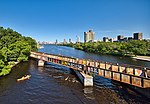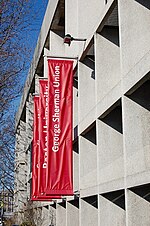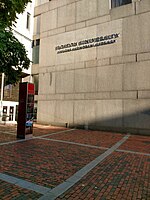Boston University Bridge

The Boston University Bridge, originally the Cottage Farm Bridge and commonly referred to as the BU Bridge, is a steel truss through arch bridge with a suspended deck carrying Route 2 over the Charles River, connecting the Boston University campus to Cambridge, Massachusetts. The bridge, with the Grand Junction Railroad Bridge directly underneath it, is incorrectly rumored to be the only place in the world where a boat can sail under a train driving under a car driving under an airplane. Other such places include the Steel Bridge in Portland, Oregon, the Manhattan Bridge in New York City and the 25 de Abril Bridge in Lisbon, although all of those bridges feature road and rail on the same span. In this case the rail and road traffic are on separate bridges.
Excerpt from the Wikipedia article Boston University Bridge (License: CC BY-SA 3.0, Authors, Images).Boston University Bridge
Storrow Drive, Boston Fenway / Kenmore
Geographical coordinates (GPS) Address Website External links Nearby Places Show on map
Geographical coordinates (GPS)
| Latitude | Longitude |
|---|---|
| N 42.35238 ° | E -71.11066 ° |
Address
Boston University Bridge
Storrow Drive
02215 Boston, Fenway / Kenmore
Massachusetts, United States
Open on Google Maps







